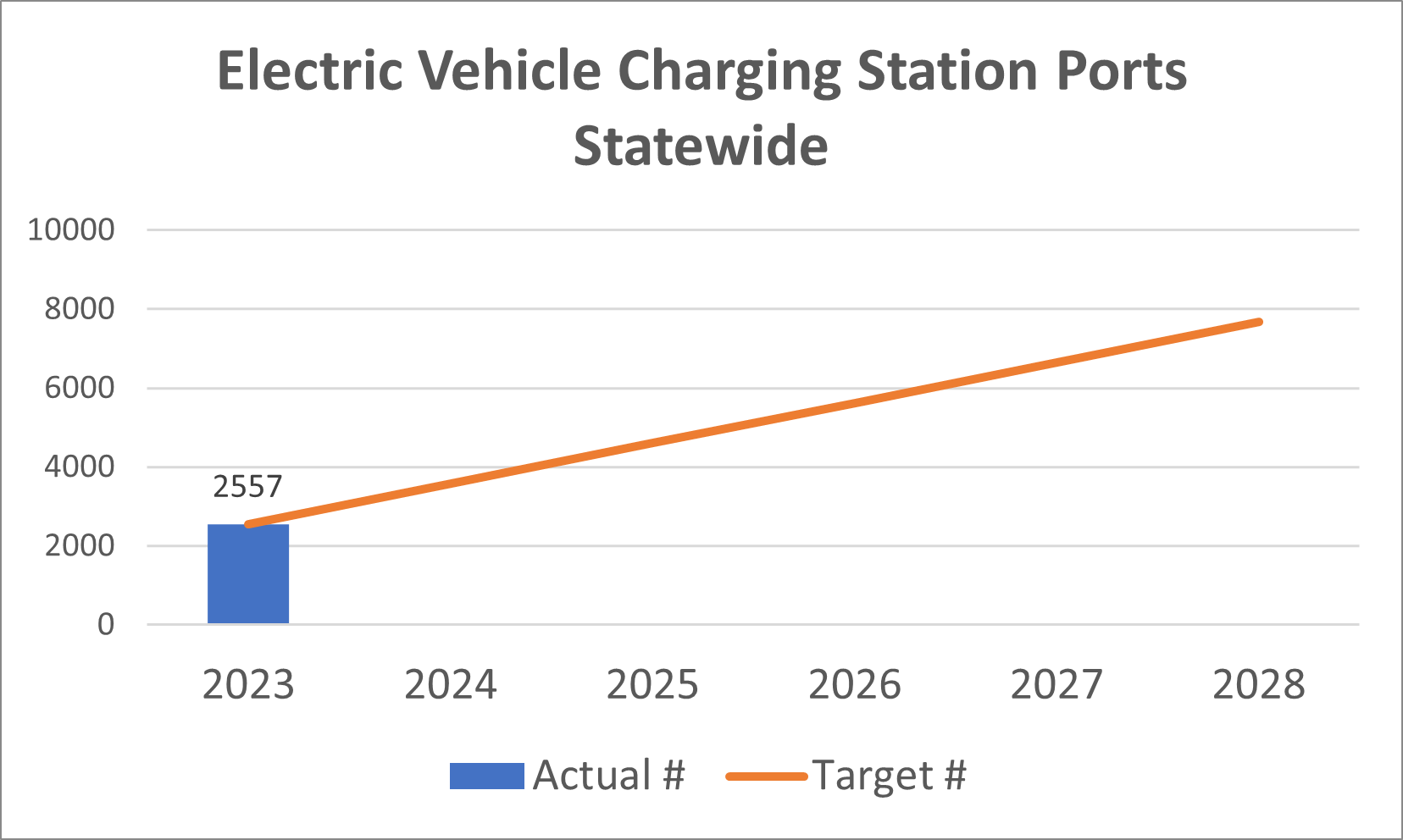ODOT has developed a resilience needs priority map to guide investment decisions. The map integrates human resilience by using ODOT’s social disparity data. Click on the image above to visit an interactive GIS map and explore more data.
The Climate Adaptation and Resilience Roadmap is our proactive approach. It provides policies and strategies for making adaptation and resilience a regular part of how we invest in and maintain the multi-modal transportation system.
Visit our Climate and Sustainability website or Oregon's Transportation Emissions website to learn more


2024-2028 Strategic Actions
Annual - Fund and direct the deployment of transportation electrification public charging infrastructure.
2026 - Apply a climate lens to ODOT investment decisions, increasing investments that result in emissions reductions or infrastructure that is more resilient to climate change and extreme weather.
2026 - Reduce GHG emissions from ODOT’s fleets and buildings.
2026 - Develop passenger vehicle miles per capita reduction strategies to align with Oregon's Transportation Plan target of 20% reduction by 2050 and monitor and report on progress.
2028 - Reduce GHG emissions from materials used by ODOT.
2024 Efforts Underway
Strategic Action Plan
| |
- Dispersing the first round of funding ($1.75M) for the Community Charging Rebates program's completed project and launching the second round of funding ($2.5M).
- Deploying federal EV Charger Reliability and Accessibility Accelerator grant to fix broken EV chargers.
- Creating a process to embed climate change considerations into our investment decisions.
|
|
Other Ongoing Efforts | |
- Integrating resilience corridors into the Oregon Highway Plan update.
- Integrating climate change and extreme weather considerations into how we manage our roads and bridges, and into our emergency response planning.
| - Requiring siting, design, and development of new and reconstructed transportation infrastructure to reduce the impact on environmentally and culturally sensitive areas; enhance and avoid the degradation of the natural and cultural environment; and protect water, air, and wildlife.
|
2024-2028 Strategic Action Plan Outcome Area
Reduce Emissions and Electrify Oregon’s Transportation System:
We will foster a cleaner transportation system that contributes less to pollution and helps achieve Oregon’s climate goals.
Measuring Our Success:
Reduce GHG emissions from ODOT activities 20% by 2028.
Measuring Our Success:
Triple electric vehicle charging station ports statewide by 2028.

Our progress this quarter:
- Strategic Action Plan Milestones developed.